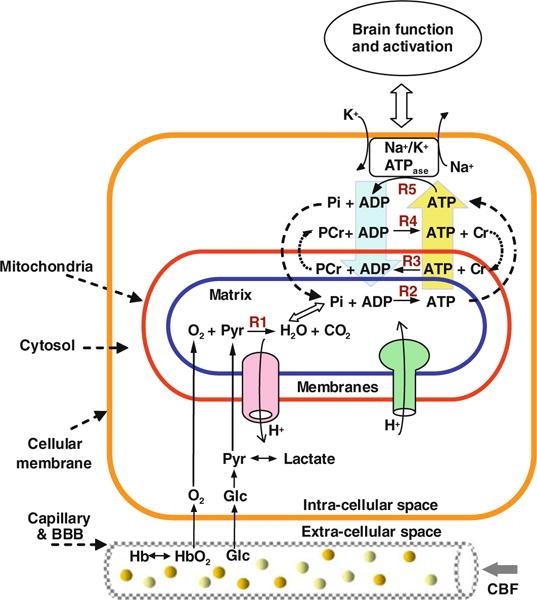Fig. 15.1.

Schematic diagram of simplified major brain network involving metabolisms and hemodynamics occurring in the capillary, subcellular compartments including the mitochondria and cytosol spaces. Oxygen dissociates from hemoglobin (Hb) and enters mitochondria and it is metabolized with pyruvate (Pyr) which is converted from glucose (Glc). This oxygen utilization via Reaction 1 (R1) is tightly coupled with four ATP reactions for generating ATP (R2), consuming ATP (R5), transporting and buffering ATP energy via the paired CK reactions (R3 vs. V4). These four ATP reactions constitute a chemical exchange network PCr↔ATP↔Pi. This neurovascular-metabolic coupled network is essential for brain function.
